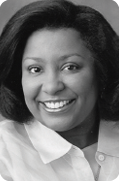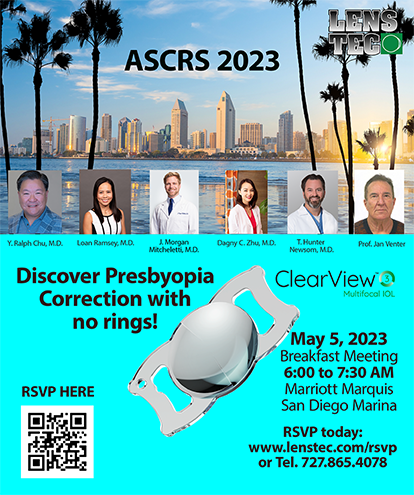
The National Medical Association (NMA) was founded in 1895 in response to the American Medical Association’s refusal to accept African American physicians as members. By 1939, there was an ophthalmology-otolaryngology section, and ophthalmology became its own section in August 1971. Today, more than 30,000 physicians participate in the NMA and work to eliminate the disparities in health care. Studies show that racial and ethnic disparities cost the United States $1.24 trillion from 2003 to 2006, with $229 billion in direct costs for medical care associated with disparities.1-3
Disparities affect cost due to misdiagnosis of disease, which may present differently in minority populations. Delay in diagnosing chronic illnesses until they are acute also adds to costs. In ophthalmology, glaucoma and diabetic retinopathy occur more frequently among African American and Latino populations but are often diagnosed when the diseases are more advanced, more difficult to treat, and requires more expensive interventions.
AT A GLANCE
• Underrepresented minorities make up 30% of the general population but only 9% of medical doctors.
• The National Medical Association’s Rabb-Venable Excellence in Research Program aims to increase the number of underrepresented minorities in ophthalmology and academic medicine. The program is a pipeline process to expose medical students and residents/fellows to role models, skills needed in medical practice and teaching, research opportunities, and mentoring.
• To reduce healthcare disparities, the National Medical Association is working with the American Academy of Ophthalmology and the Association of University Professors of Ophthalmology to increase minority representation in order for the specialty to reflect the general population in the near future.
Underrepresented minorities (URM) make up 30% of the general population but only 9% of medical doctors.2 In addition, the number of URMs who matched in ophthalmology residency programs in 2015 is dismal at 2% Black/African American, 3% Hispanic/Latino, and no one of American Indian/Alaska Native or Native Hawaiian/Pacific Islander ethnicity. The numbers of African Americans in particular have remained stagnant, with approximately 2% of graduating ophthalmology residents of African ancestry since the 1970s.3-5 URM physicians frequently return to their community to practice. The lack of a training pathway for URM ophthalmologists further limits community access to specialists.
RABB-VENABLE PROGRAM
The NMA Ophthalmology Section Rabb-Venable Excellence in Research Program (bit.ly/Rabb-Venable) aims to increase the number of URMs in ophthalmology and academic medicine. The program is a pipeline process to expose medical students and residents/fellows to role models, skills needed in medical practice and teaching, research opportunities, and mentoring. The program recruits mentors who can help develop academicians and connect them with previous National Institutes of Health (NIH) researchers such as Terri Young, MD, chair of ophthalmology, University of Wisconsin; Janine Clayton, MD, NIH director of the Office of Research in Women’s Health, NIH; Eve Higginbotham, MD, vice dean of diversity and inclusion, University of Pennsylvania School of Medicine; Marcia Carney, MD, professor of ophthalmology, University of Maryland; Paul Lee, MD, chair, University of Michigan; Leon Herndon, MD, director, Glaucoma Service, Duke University; Keith Carter, professor and chair, University of Iowa (American Academy of Ophthalmology President-Elect); and Richard Stone, MD, professor of ophthalmology, University of Pennsylvania.
The students and residents who participate in the program have access to prominent academicians who can provide mentorship and facilitate research experiences at numerous institutions, thanks to their nationwide contacts. The opportunity to participate in the annual program allows the medical students to improve their chances of admission into competitive ophthalmology residency programs. The Rabb-Venable Program had an 80% match with the San Francisco Match Program 2017. Additionally, after 16 years of the program, the outcomes show that past Rabb-Venable attendees, especially those who entered as medical students, have an increase in appointments to academic faculty positions and access to NIH repayment program participation and K grants.
Collaborations have been developed with NIH programs such as the Summer Minority Research Program, headed by Cesar Perez at the National Eye Institute; the National Institute of Diabetes and Digestive and Kidney Disease program held at the NMA annual meeting; and the Association for Research in Vision and Ophthalmology (ARVO). Each year, two individuals who present the best research, as judged by a scientific team onsite, are eligible to attend ARVO through a travel grant to present their projects. These winners also deliver presentations to the ARVO Diversity Committee, of which I am the incoming chair in 2017. The NMA encourages those who enter academic medicine to negotiate with their institutions to attend the Association of American Medical Colleges Minority Faculty Development Program or the Women’s Program to further support their professional development.
RECRUITMENT
The NMA’s primary points of contact with URM medical students are the Student National Medical Association, the Latino Student Medical Association, and the American Indian Medical Association. New efforts are underway to increase URM representation in the field of ophthalmology with the American Academy of Ophthalmology and Association of University Professors in Ophthalmology to increase the representation to 7% to 9%, thereby reflecting the percentage of URM students graduating from medical school. These efforts are commendable given the long-term commitment and impact these changes can make in the lives of these individuals.
Better URM representation will take a village, determination, and passion from everyone in the field. These changes will continue to bring diversification and excellence to a field I might not have considered years ago had a mentor not helped me.
1. LaVeist TA, Gaskin DJ, Richard P. The Economic Burden of Health Inequalities in the United States. The Joint Center for Political and Economic Studies. http://bit.ly/disparityinUS. Published September 7, 2011. Accessed March 27, 2017.
2. Sisko A, Truffer C, Smith S, et al. Health spending projections through 2018: recession effects add uncertainty to the outlook. Health Aff (Milwood). 2009;28 (2):w346-57.
3. Total Professionally Active Physicians. The Henry J. Kaiser Family Foundation. http://kff.org/other/state-indicator/total-active-physicians/. Accessed March 16, 2017.
4. Johnson LN, Daniels OCB (eds). Breaking the Color Line in Medicine: African Americans in Ophthalmology. Thorofare, New Jersey: Slack; 2002. [reformat]
5. Xierali IM, Nivet MA, Wilson MR. Current and future status of diversity in ophthalmologist workforce. JAMA Ophthalmol. 2016;134(9): 1016-1023.




